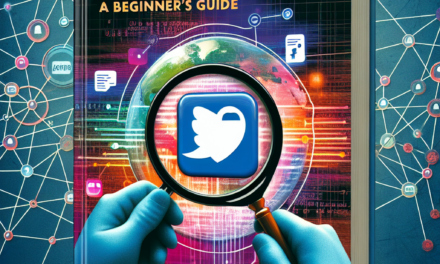Microsoft Dragon Copilot: Streamlining Administrative Tasks for Clinicians
In the fast-paced world of healthcare, clinicians often find themselves overwhelmed by administrative tasks that detract from their primary focus: patient care. Microsoft Dragon Copilot emerges as a transformative tool designed to alleviate this burden, leveraging advanced artificial intelligence to streamline various administrative processes. This article delves into the functionalities, benefits, and implications of Microsoft Dragon Copilot in the healthcare sector, providing a comprehensive overview of how it can enhance clinician efficiency and patient outcomes.
1. Understanding Microsoft Dragon Copilot
Microsoft Dragon Copilot is an AI-powered assistant that integrates seamlessly with existing healthcare systems to automate and optimize administrative tasks. Built on the foundation of natural language processing and machine learning, Dragon Copilot is designed to understand and respond to clinician needs in real-time. This section explores the core functionalities of Dragon Copilot, its technological underpinnings, and its integration with healthcare workflows.
1.1 Core Functionalities
Dragon Copilot offers a range of functionalities tailored to the unique demands of healthcare professionals. Some of the key features include:
- Voice Recognition: Clinicians can dictate notes, prescriptions, and other documentation, significantly reducing the time spent on manual data entry.
- Task Automation: Routine administrative tasks such as appointment scheduling, billing, and patient follow-ups can be automated, freeing up valuable time for clinicians.
- Data Integration: Dragon Copilot integrates with electronic health records (EHR) systems, ensuring that all patient data is up-to-date and easily accessible.
- Real-time Assistance: The AI can provide real-time suggestions and reminders, helping clinicians stay organized and focused on patient care.
- Analytics and Reporting: Dragon Copilot can generate reports and analyze data trends, providing insights that can improve clinical decision-making.
1.2 Technological Underpinnings
The technology behind Microsoft Dragon Copilot is rooted in advanced AI algorithms that enable it to learn from user interactions. By utilizing machine learning, the system continuously improves its accuracy and efficiency. Key components include:
- Natural Language Processing (NLP): This allows the AI to understand and interpret human language, making it capable of processing voice commands and dictations effectively.
- Machine Learning: The system learns from clinician behavior and preferences, adapting its functionalities to better serve individual users.
- Cloud Computing: Leveraging cloud technology ensures that data is securely stored and accessible from anywhere, facilitating remote work and telehealth services.
1.3 Integration with Healthcare Workflows
For Dragon Copilot to be effective, it must integrate seamlessly with existing healthcare workflows. This involves collaboration with EHR systems, practice management software, and other digital tools used by clinicians. The integration process typically includes:
- API Development: Custom APIs are developed to ensure that Dragon Copilot can communicate effectively with other software systems.
- User Training: Clinicians and administrative staff receive training on how to utilize Dragon Copilot effectively, ensuring a smooth transition.
- Feedback Mechanisms: Continuous feedback from users helps refine the system, making it more responsive to clinician needs.
2. Enhancing Clinical Efficiency
One of the primary advantages of Microsoft Dragon Copilot is its ability to enhance clinical efficiency. By automating routine tasks and streamlining workflows, clinicians can devote more time to patient care. This section examines how Dragon Copilot contributes to improved efficiency in clinical settings.
2.1 Reducing Documentation Time
Documentation is a significant burden for clinicians, often consuming hours that could be spent on patient interactions. Dragon Copilot addresses this issue by enabling voice-to-text capabilities, allowing clinicians to dictate notes directly into the EHR. Studies have shown that voice recognition technology can reduce documentation time by up to 50%, leading to:
- Increased Patient Interaction: With less time spent on paperwork, clinicians can engage more meaningfully with patients, improving the overall patient experience.
- Improved Accuracy: Voice recognition minimizes the risk of transcription errors, ensuring that patient records are accurate and up-to-date.
- Enhanced Workflow: The ability to quickly document encounters allows for a more streamlined workflow, reducing bottlenecks in patient care.
2.2 Automating Administrative Tasks
Administrative tasks such as appointment scheduling, billing, and follow-ups can be time-consuming and prone to human error. Dragon Copilot automates these processes, leading to significant time savings. For example:
- Appointment Scheduling: Clinicians can use Dragon Copilot to schedule appointments through voice commands, reducing the need for administrative staff involvement.
- Billing Automation: The AI can automatically generate billing codes based on documented services, minimizing errors and expediting the billing process.
- Patient Follow-ups: Automated reminders can be sent to patients for follow-up appointments or medication refills, improving adherence to treatment plans.
2.3 Streamlining Communication
Effective communication is crucial in healthcare settings. Dragon Copilot enhances communication among clinicians, administrative staff, and patients. Key benefits include:
- Real-time Updates: Clinicians can receive real-time updates on patient status, lab results, and other critical information, enabling timely decision-making.
- Interdisciplinary Collaboration: The AI facilitates communication between different departments, ensuring that all team members are informed and aligned on patient care plans.
- Patient Engagement: By automating communication with patients, such as appointment reminders and educational materials, Dragon Copilot fosters greater patient engagement and satisfaction.
3. Improving Patient Care Quality
While efficiency is essential, the ultimate goal of any healthcare technology is to improve patient care quality. Microsoft Dragon Copilot plays a pivotal role in enhancing the quality of care delivered to patients. This section explores how the tool contributes to better patient outcomes.
3.1 Enhancing Clinical Decision-Making
Dragon Copilot provides clinicians with access to real-time data and analytics, empowering them to make informed decisions. By analyzing patient data, the AI can offer insights that enhance clinical decision-making. For instance:
- Data-Driven Insights: Clinicians can access analytics on patient trends, treatment outcomes, and population health metrics, allowing for evidence-based decision-making.
- Clinical Guidelines: The AI can provide reminders about clinical guidelines and best practices, ensuring that clinicians adhere to established protocols.
- Risk Assessment: By analyzing patient data, Dragon Copilot can identify high-risk patients and alert clinicians to potential issues, enabling proactive interventions.
3.2 Personalizing Patient Care
Personalized care is increasingly recognized as a cornerstone of effective healthcare. Dragon Copilot aids in tailoring care plans to individual patient needs by:
- Patient History Analysis: The AI can analyze a patient’s medical history, preferences, and social determinants of health to inform personalized treatment plans.
- Customized Communication: Dragon Copilot can generate personalized educational materials for patients based on their specific conditions and treatment plans.
- Follow-up Tailoring: The AI can suggest personalized follow-up schedules based on patient needs, ensuring that care is both timely and relevant.
3.3 Enhancing Patient Safety
Patient safety is paramount in healthcare. Dragon Copilot contributes to safety by minimizing errors and improving communication. Key aspects include:
- Error Reduction: By automating documentation and billing processes, the risk of human error is significantly reduced, leading to safer patient care.
- Alert Systems: The AI can alert clinicians to potential drug interactions, allergies, or other safety concerns based on patient data.
- Improved Handoffs: Enhanced communication between care teams ensures that critical information is conveyed during patient handoffs, reducing the risk of oversight.
4. Addressing Challenges and Limitations
While Microsoft Dragon Copilot offers numerous benefits, it is essential to acknowledge the challenges and limitations associated with its implementation in healthcare settings. This section discusses potential obstacles and considerations for successful adoption.
4.1 Resistance to Change
One of the most significant challenges in adopting new technology in healthcare is resistance to change among clinicians and staff. Factors contributing to this resistance include:
- Comfort with Existing Systems: Clinicians may be accustomed to traditional workflows and hesitant to adopt new tools that require a learning curve.
- Fear of Job Displacement: Some staff may worry that automation will lead to job loss, creating resistance to adopting AI solutions.
- Perceived Complexity: If the technology is perceived as complex or difficult to use, clinicians may be reluctant to engage with it.
4.2 Data Privacy and Security Concerns
Data privacy and security are paramount in healthcare, and the integration of AI tools raises concerns about patient data protection. Key considerations include:
- Compliance with Regulations: Healthcare organizations must ensure that Dragon Copilot complies with regulations such as HIPAA to protect patient information.
- Data Breach Risks: The use of cloud technology introduces potential vulnerabilities, necessitating robust security measures to safeguard sensitive data.
- Patient Consent: Clinicians must navigate the complexities of obtaining patient consent for data usage, which can complicate implementation.
4.3 Integration Challenges
Integrating Dragon Copilot with existing healthcare systems can pose technical challenges. Key issues include:
- Compatibility with EHR Systems: Ensuring that Dragon Copilot works seamlessly with various EHR platforms can be a complex process.
- Technical Support Needs: Ongoing technical support may be required to address integration issues and ensure smooth operation.
- Training Requirements: Comprehensive training programs are essential to ensure that clinicians and staff can effectively utilize the new technology.
5. Future Implications of Microsoft Dragon Copilot in Healthcare
The future of Microsoft Dragon Copilot in healthcare is promising, with the potential to revolutionize how clinicians manage administrative tasks. This section explores the future implications of this technology and its potential impact on the healthcare landscape.
5.1 Advancements in AI Technology
As AI technology continues to evolve, Dragon Copilot is likely to become even more sophisticated. Future advancements may include:
- Enhanced Natural Language Understanding: Improvements in NLP will enable the AI to understand complex medical terminology and context more effectively.
- Predictive Analytics: Future iterations may incorporate predictive analytics to anticipate patient needs and outcomes based on historical data.
- Integration with Wearable Technology: Dragon Copilot could integrate with wearable devices to provide real-time health monitoring and insights.
5.2 Expanding Use Cases
The applications of Dragon Copilot are not limited to administrative tasks. Future use cases may include:
- Telehealth Support: The AI could assist in telehealth consultations by providing real-time data and documentation support during virtual visits.
- Patient Education: Dragon Copilot could generate personalized educational content for patients based on their conditions and treatment plans.
- Research and Development: The AI could assist in clinical research by analyzing large datasets and identifying trends or correlations.
5.3 Transforming Healthcare Delivery Models
The integration of AI tools like Dragon Copilot has the potential to transform healthcare delivery models. Key implications include:
- Shift Toward Value-Based Care: By streamlining administrative tasks, clinicians can focus more on delivering high-quality care, aligning with value-based care models.
- Increased Access to Care: Automation may enable healthcare organizations to expand services and reach underserved populations more effectively.
- Collaboration Across Disciplines: Enhanced communication facilitated by AI tools can foster greater collaboration among healthcare teams, improving patient outcomes.
Conclusion
Microsoft Dragon Copilot represents a significant advancement in the integration of artificial intelligence within healthcare. By streamlining administrative tasks, enhancing clinical efficiency, and improving patient care quality, this innovative tool has the potential to transform the way clinicians operate. While challenges such as resistance to change and data privacy concerns must be addressed, the future implications of Dragon Copilot are promising. As technology continues to evolve, the healthcare landscape will likely see a shift toward more efficient, patient-centered care, ultimately benefiting both clinicians and patients alike.
In summary, Microsoft Dragon Copilot stands at the forefront of a technological revolution in healthcare, offering solutions that not only alleviate administrative burdens but also enhance the overall quality of care. As healthcare organizations embrace this technology, the potential for improved patient outcomes and clinician satisfaction becomes increasingly attainable.





